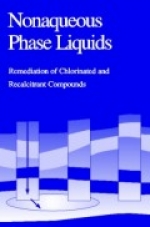Tab Article
Nonaqueous phase liquids, especially DNAPLs, are among the most challenging contaminants facing environmental remediation professionals. Difficult to detect and stubborn to remove, DNAPLs are a problem at thousands of contaminated sites worldwide. Nonaqueous Phase Liquids: Remediation of Chlorinated and Recalcitrant Compounds brings together the latest research and field studies to present a systematic overview of the current state of the art in DNAPL recovery systems, simulation of DNAPL multiphase flow and transport, DNAPL movement and subsurface behavior, fractured media, and NAPL remediation.


